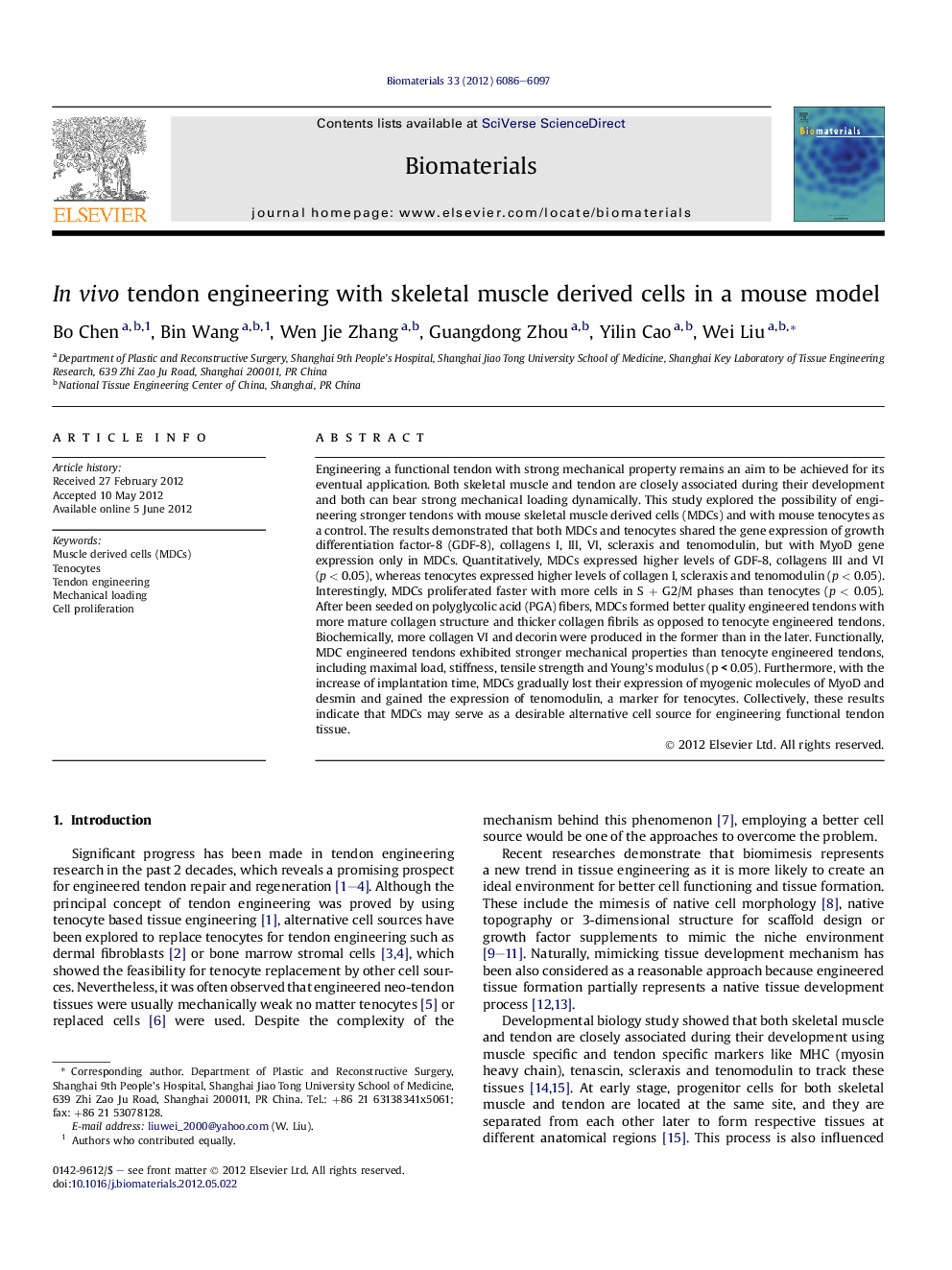| کد مقاله | کد نشریه | سال انتشار | مقاله انگلیسی | نسخه تمام متن |
|---|---|---|---|---|
| 6707 | 513 | 2012 | 12 صفحه PDF | دانلود رایگان |

Engineering a functional tendon with strong mechanical property remains an aim to be achieved for its eventual application. Both skeletal muscle and tendon are closely associated during their development and both can bear strong mechanical loading dynamically. This study explored the possibility of engineering stronger tendons with mouse skeletal muscle derived cells (MDCs) and with mouse tenocytes as a control. The results demonstrated that both MDCs and tenocytes shared the gene expression of growth differentiation factor-8 (GDF-8), collagens I, III, VI, scleraxis and tenomodulin, but with MyoD gene expression only in MDCs. Quantitatively, MDCs expressed higher levels of GDF-8, collagens III and VI (p < 0.05), whereas tenocytes expressed higher levels of collagen I, scleraxis and tenomodulin (p < 0.05). Interestingly, MDCs proliferated faster with more cells in S + G2/M phases than tenocytes (p < 0.05). After been seeded on polyglycolic acid (PGA) fibers, MDCs formed better quality engineered tendons with more mature collagen structure and thicker collagen fibrils as opposed to tenocyte engineered tendons. Biochemically, more collagen VI and decorin were produced in the former than in the later. Functionally, MDC engineered tendons exhibited stronger mechanical properties than tenocyte engineered tendons, including maximal load, stiffness, tensile strength and Young's modulus (p < 0.05). Furthermore, with the increase of implantation time, MDCs gradually lost their expression of myogenic molecules of MyoD and desmin and gained the expression of tenomodulin, a marker for tenocytes. Collectively, these results indicate that MDCs may serve as a desirable alternative cell source for engineering functional tendon tissue.
Journal: Biomaterials - Volume 33, Issue 26, September 2012, Pages 6086–6097